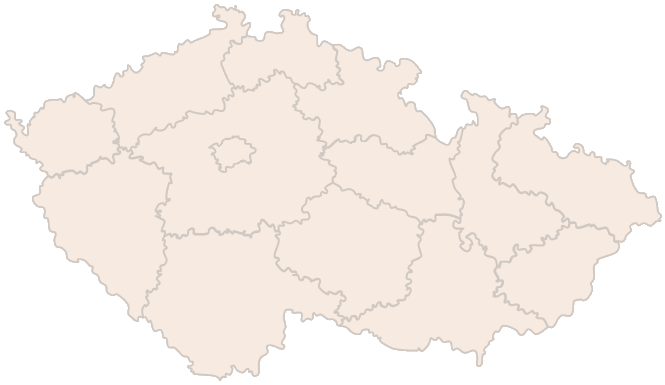Let’s get this out of the way right from the start: A trademark is not a shield that automatically protects your brand from attack. Yet many entrepreneurs feel that once they have this paper security in hand, they’re covered. But then a cold shower can come.
Imagine a small clothing store registers a trademark on its brand name – let’s say “Urban Fox.” Everything goes smoothly. Logo, website, domain, advertising, social media – the brand grows. But after a year, a challenge comes: a company from Germany, which has used and registered a similar mark “UrbanFuchs” for years, files a cancellation lawsuit. And lo and behold – “Urban Fox” loses its brand, its domain and the trust of its customers.
Why? Because the original owner of the Czech mark ignored the trademark database. He never looked to see if a similar or confusing mark might already exist. And it did exist – just in a different country and registered slightly differently. Yet it had legal force.
Why does it work that way? Because in intellectual property law, “first come, first served” does not apply without qualification. If your mark conflicts with an existing, older mark – whether in words, images or meaning – you have a problem.
This is also why you need to use trade mark databases. It’s not enough to just have a trademark, you need to examine it before registration, monitor it during its lifetime and defend it when it is threatened. The aforementioned trademark database is used to do just that.
Are you solving a similar problem?
We register your brand
Whether you are starting a business and want to protect your brand, or you suddenly feel the need to protect yourself from competitors, we can help you register your trademark. We’ll handle all the paperwork for you.
That's what I'm wondering
- When you order, you know what you will get and how much it will cost.
- We handle everything online or in person at one of our 6 offices.
- We handle 8 out of 10 requests within 2 working days.
- We have specialists for every field of law.
What is a trademark database and who manages it?
When you say trademark database, many people unconsciously think of something very technical. And in a way, they are right. These are extensive lists, registers and filing systems. But at the same time, they are tools full of practical information that you can easily use even if you don’t have a legal background.
You can look up the following information in any trade mark database:
- the name of the mark (word mark),
- type (word, figurative, combined, sound…),
- owner/applicant,
- status of the mark (filed, published, registered, refused, cancelled…),
- classes of goods and services (so-called Nice Classification),
- country or territorial validity (e.g. Czech Republic, EU, international),
- figurative representation – for logos and figurative marks,
- dates – date of filing, publication, registration or refusal.
There are three major institutions that administer trade mark registers. The Czech database is managed by the Industrial Property Office. It contains all applications and registered trademarks for the territory of the Czech Republic. It also allows full-text and advanced searches. In the search form for patents and utility models, you just need to enter a few data and you can browse all Czech invention applications published since 1991, patents, utility models and European patents valid in the Czech Republic.
Then there is the European Union Intellectual Property Office (EUIPO ) database, which collects all trademarks valid throughout the European Union (so-called EU trademarks). The third trademark database is the international database of WIPO (World Intellectual Property Organization), which contains trademarks registered under the Madrid system, with a selection of countries where they are valid (e.g. EU, USA, China…). This would mostly only be relevant for you when you are planning to expand outside the EU.
All databases are available online and are public. You don’t have to pay to search for a brand or register.
Tip for article
Tip: For easier searching across different databases, you can use the TMview platform, where you can find trademarks from more than 70 countries around the world – including the Czech Republic.
When and why search trademark databases?
A trademark is not just about registration, it is a tool that has value – and risks. And a trademark database can help you protect your brand and your investment at different stages of your business.
1. When choosing a brand name, domain name or logo
If you want to name any of your new products or services, then check the databases before you order a logo and buy a domain. Someone may already be using a similar visual or name. And if your brand would be interchangeable, then it would be invalid. So, by using a database, you avoid the risk of having to change your name or even pay compensation to someone.
2. Before filing a trademark application
Before you apply for something yourself, you should logically check that you can get away with it. It may sound trivial to you, but many people just try to file something and hope they can get away with it. It’s just that the Industrial Property Office checks for conflicts, and if there are any, then it will reject the application.
3. When expanding into new markets
Do you want to take your product to Slovakia, Germany or even the USA? Then check the trademark databases there. Surprisingly often, a trademark that is free in the Czech Republic is protected in another country. In practice, it looks like a Czech company called “Milo” wants to expand into the German market. However, there is already a protected brand name of a well-known food producer called “Milo®”. As a result, a name change would be necessary.
4. In the event of suspected infringement
Do you have the feeling that someone has copied your logo? Or is using similar colours, fonts or wording? Then check to see if they have a registered trademark. If not, it may be an infringement of your rights. But once they have registered it, you may be treading on thin ice yourself.
5. Before buying a business or brand
Doing due diligence? Then be sure to review the company’s trademark list as well. Just because a trademark exists doesn’t mean it’s legally protected. In fact, many companies have a great name but don’t have a registered trademark. Others have one, but it’s expired or being challenged. Trademark databases make it easy to find out the current status.
6. Regularly for monitoring and filing oppositions
It’s one thing to obtain a trademark, it’s another to protect it. By regularly monitoring the databases, you’ll find out if someone is trying to register something suspiciously similar to your mark, you’ll have time to file an opposition (you only have 3 months from publication) and you’ll also be aware of how your competitors are extending their protection.
Summary
Trademark databases are an indispensable tool for anyone who wants to not only register their mark, but more importantly protect it in the long term. It’s not enough to simply register your mark – you need to check it before registration, monitor it on an ongoing basis and defend it if necessary. This is what national (Industrial Property Office), European (EUIPO) and international (WIPO) databases contain key information on existing trademarks: from name, type and owner to product classes and legal status. Searching is free, online and can be done by a layman. With the databases, you can avoid unnecessary legal disputes, detect conflicting marks before filing an application, check the availability of a brand when expanding into new markets, find out the status of rights when buying a business, identify potential infringements or continuously monitor whether someone is threatening your brand. Those who want to build a strong and sustainable brand should have database work in their business habit.




